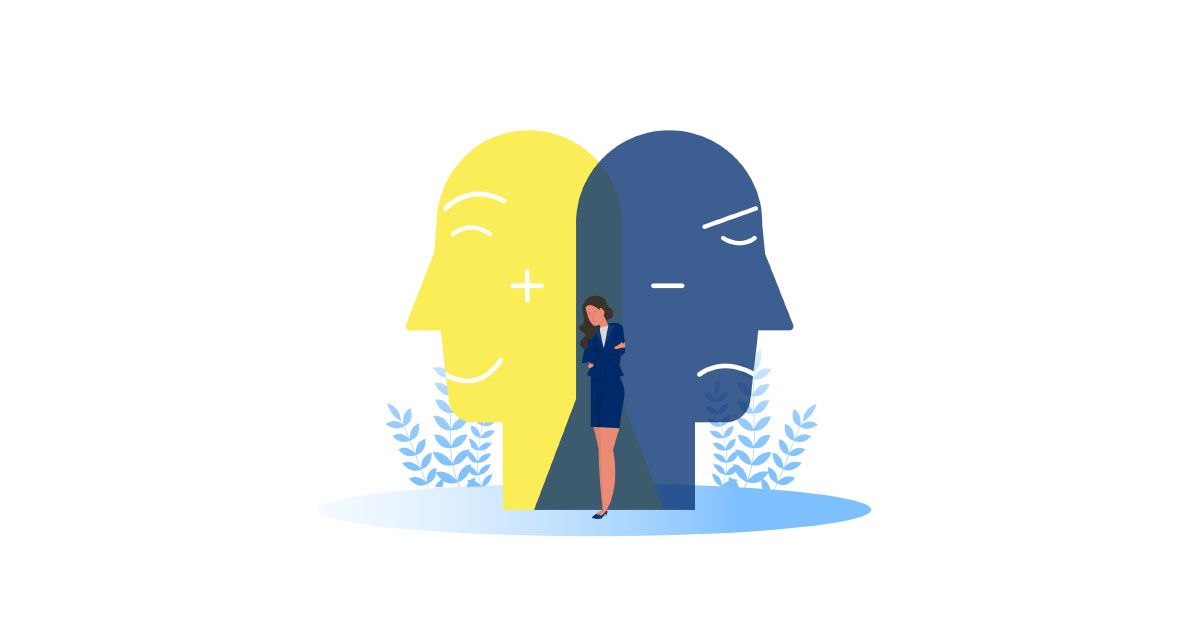Subtypes Of Bipolar Disorder

The Albany Clinic • October 9, 2022
Bipolar disorder is a mental illness that is punctuated by drastic mood swings that alternate between periods of mania (abnormally elevated mood, increased activity levels, and euphoria) and periods of depression (extreme sadness, low mood, and reduced energy levels)
The highs of mania can last for weeks or even months. During these periods, people with bipolar disorder may feel invincible, full of energy, and incredibly productive. Other symptoms of mania include:
- Inflated self-esteem
- Reduced need for sleep
- Racing thoughts
- Getting easily distracted
- Impulsive and risky behavior
- Delusions of grandeur
- Impulsivity and recklessness
- Poor decision making
- Increased productivity
- Changes in appetite
- Speaking to fast
Similarly, the lows of depression episodes can be just as severe. People with bipolar disorder often report feeling persistently sad, hopeless, and exhausted during a depression episode. Other symptoms include:
- Persistent sadness or low mood
- Erratic sleeping patterns (sleeping too much or too little)
- Anxiety and irritability
- Loss of energy and motivation
- Feelings of worthlessness, guilt, or hopelessness
- Trouble concentrating or making decisions
- Anger and irritability
- Memory problems
- Low energy and motivation
- Though of suicide or self-harm
These episodes of mania and depression are often separated by periods of normal mood and activity level.
Classification of Bipolar Disorder
Bipolar I Disorder
Bipolar I disorder is characterized by manic episodes that last for at least seven days (or manic symptoms that are so intense and debilitating that hospitalization is needed). These episodes are followed by depressive episodes that last for at least two weeks. To be diagnosed with bipolar I disorder, a person must experience at least one manic episode in their lifetime.
Bipolar II Disorder
Bipolar II disorder is similar to bipolar I disorder, except that the manic episodes are replaced by hypomanic episodes. Hypomanic episodes are similar to manic episodes, but they are less severe and do not last as long. To be diagnosed with bipolar II disorder, a person must experience at least one depressive episode and one hypomanic episode in their lifetime.
Cyclothymic Disorder
Cyclothymic disorder is a milder but more frequent form of bipolar disorder that is characterized by periods of hypomania and depression that last for at least two years (one year in children and adolescents). However, the symptoms never reach the level of severity necessary to be diagnosed with bipolar I or II.
Rapid-Cycling Bipolar Disorder
People with rapid-cycling bipolar disorder experience four or more episodes of mania/hypomania or depression in a 12-month period. These episodes can even occur within the same week or month. Rapid cycling is more common in women than men and often begins later in life (after age 50). It’s also more likely to occur in people with close relatives who have bipolar disorder.
Unspecified Bipolar and Related Disorders
This category is used when a person experiences symptoms that mildly resemble bipolar disorder but don’t meet the full criteria for any specific subtype. It can also be used when the exact subtype cannot be determined.
What Causes Bipolar Disorder?
The exact cause of bipolar disorder is unknown. However, it’s thought to be caused by a combination of genetic and environmental factors. Evidence suggests bipolar disorder is hereditary , implying certain genes can make people more susceptible to developing the condition.
Environmental factors such as stress, childhood neglect, abuse, and emotional trauma may also trigger the onset of the illness. Other possible causes of bipolar disorder include brain structure abnormalities, neurotransmitter imbalances, substance abuse, and changes in circadian rhythms.
The Bottom Line
Bipolar disorder is a complex mental illness that can manifest in different ways. While most people are familiar with bipolar I, there are less known but equally debilitating subtypes of bipolar disorder. In most cases, bipolar disorder is a long-term condition that requires ongoing treatment.
Treating bipolar disorder involves the use of medication, therapy, and self-care. In severe cases, hospitalization may be necessary to stabilize a person and prevent suicide or self-harm. With proper care, most patients with bipolar disorder are able to lead healthy and productive lives.
The post Subtypes Of Bipolar Disorder appeared first on The Albany Clinic.







